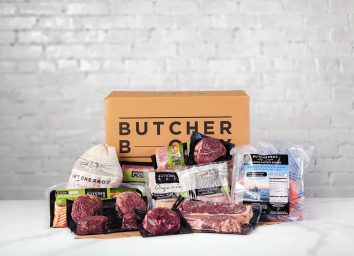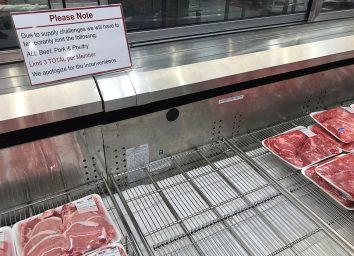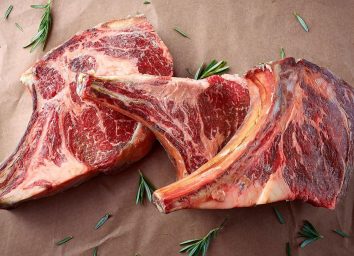6 Worst Mistakes You're Making When Buying Meat
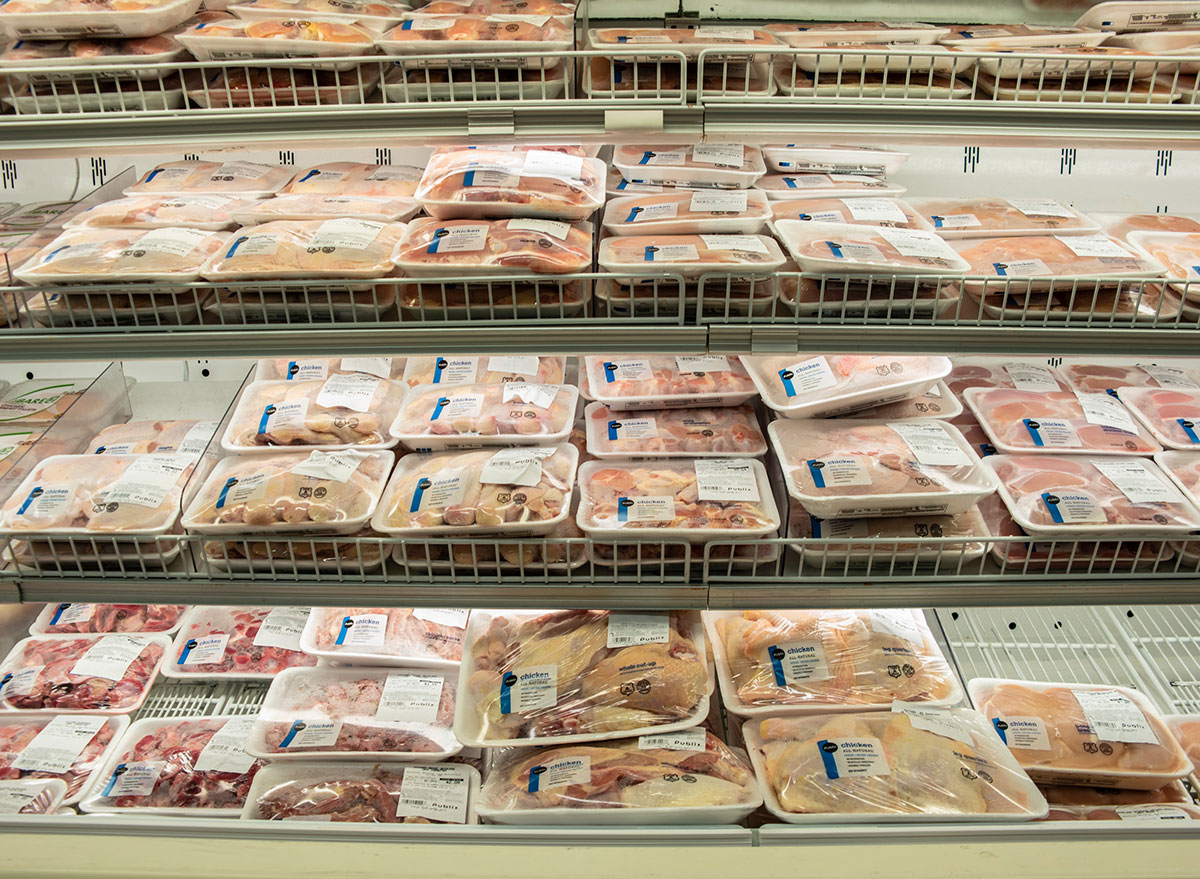
With the looming meat shortage, you'll want to make sure that the meat you do buy at the store is the highest quality. So what should you look for when shopping for chicken or beef? The key is knowing where your meat came from and what it was fed, as well as checking its appearance in store.
Here are a few common meat shopping mistakes you might be making—let these tips guide your next grocery shopping trip. And for more cooking and shopping tips, sign up for our newsletter to get daily recipes and food news in your inbox!
Mistake: Shying away from frozen meat.
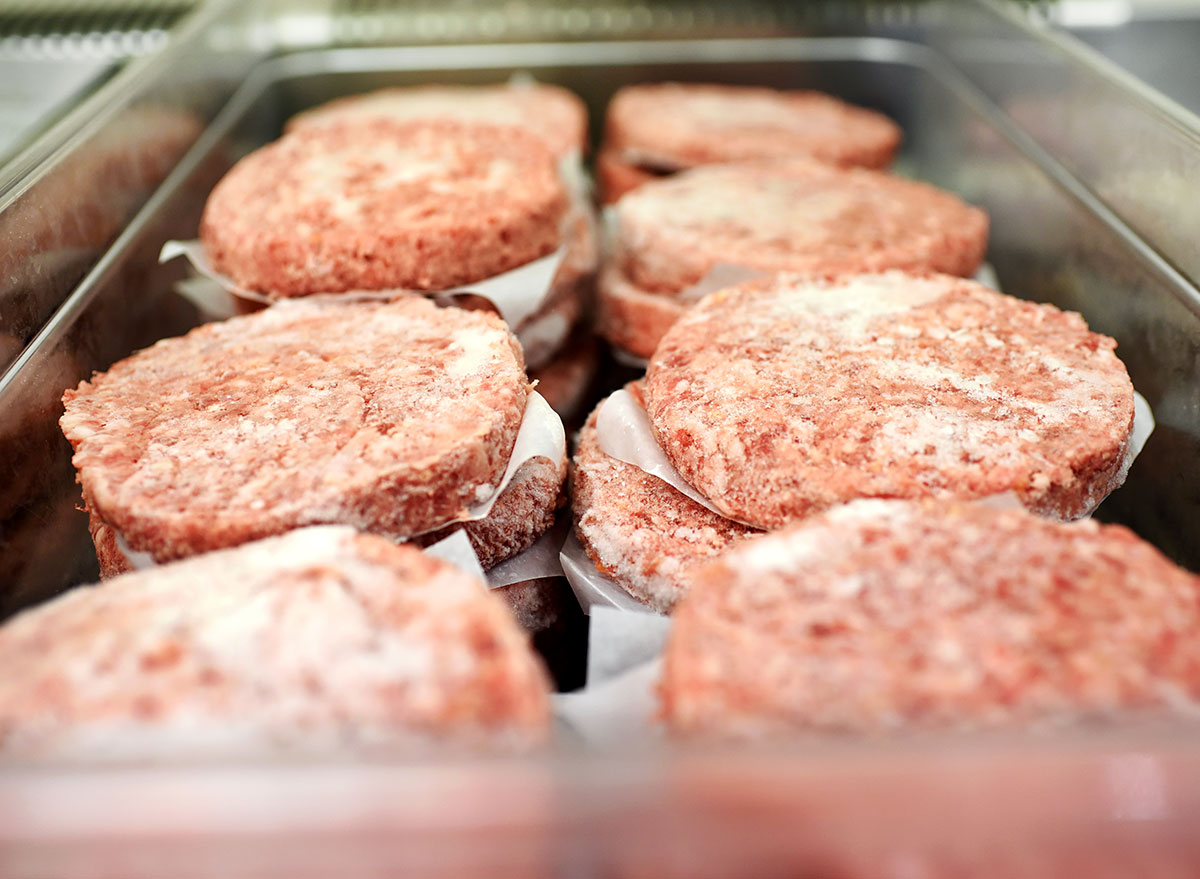
As fresh meat gets harder to come by, you might find yourself buying frozen meat more than you were before. And that is OK! Frozen meat can be just as delicious and nutritious as its fresh counterparts.
How to fix it: Be open to buying frozen meat! And that doesn't mean just at the store—there are plenty of great meat delivery services, too.
"Frozen doesn't mean it is not good. Most meat that you see in the grocery stores was previously frozen," says nutrition expert Katie Boyd, M.S., author of the upcoming book Ambitchious. "It actually makes life more convenient. There are amazing companies like Grass Roots Co-op and Butcher Box that allow you to choose your meats online, have a revolving monthly order that you can modify, and [the meat] comes frozen in a box right to your doorstep."
Mistake: Not inspecting raw chicken.
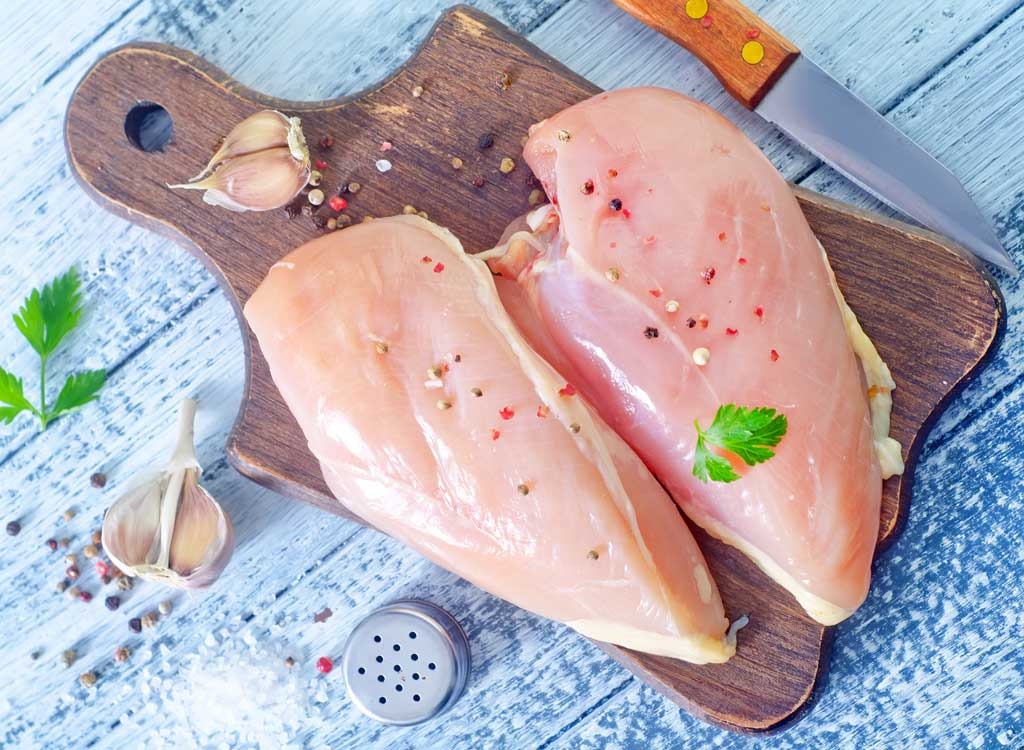
Whether you're buying fresh chicken at the store or trying to see if that package of chicken breasts in your fridge is still good, you should always look at the color of the meat.
How to fix it: Look for pink chicken, not gray meat.
"Fresh, raw chicken should have a pink, fleshy color," Claudia Sidoti, head chef at Hello Fresh, previously said to Eat This, Not That. "As it starts to go bad, the color fades to a shade of grey. If the color starts to look duller, you should use it immediately."
Mistake: Always buying the same things.
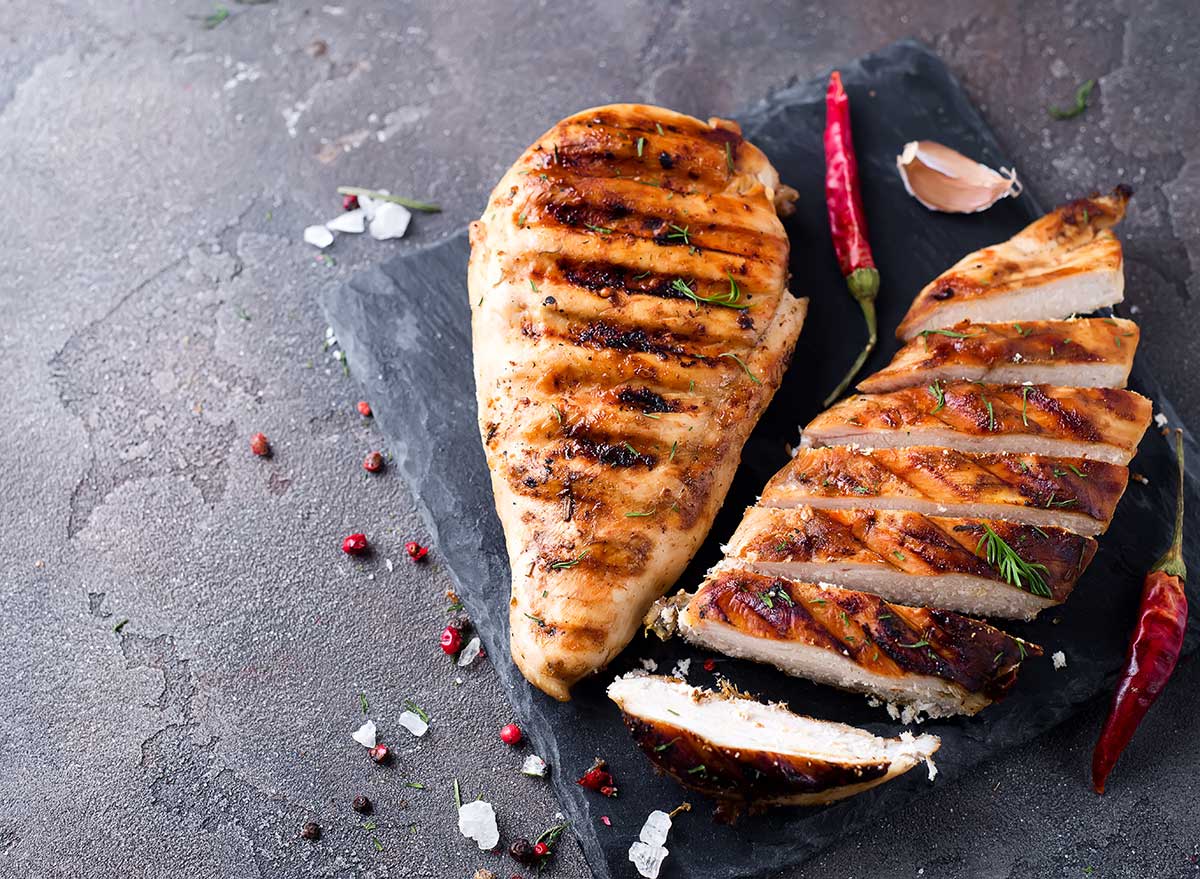
"Unless your dad was the local butcher, many people are miffed when buying meat, so they stick to their old standbys: ground beef and chicken breast," Boyd says. "That can get real boring real quick."
How to fix it: Try new cuts of meat and new recipes! With limited availability at the store, now's a great time to add some new recipes into your weekly rotation. Try pork chops instead of steak, or swap out ground beef for one of these 31 Delicious Dinners You Can Make With Ground Pork.
Mistake: Only considering skinless meat.

Yes, skinless chicken breasts and thighs have less fat. But the skin-on versions are more flavorful and can still be part of a healthy diet. The same is true of red meat, too—fat is what gives marbled steak that delicious, juicy flavor.
How to fix it: Consider different cuts of meat than what you'd normally buy. "Fat is good. Fat is what keeps your meat moist and delicious," Boyd says. "I always go for fattier cuts of meat like ribeye, short ribs, salmon, or even chicken thighs with the skin on. So many people think that fat is bad for you, but you need fat in your macronutrient profile, so why not make sure it is real and not modified fat from a lab?" We couldn't agree more.
Mistake: Not considering the animal's diet before it got to your plate.
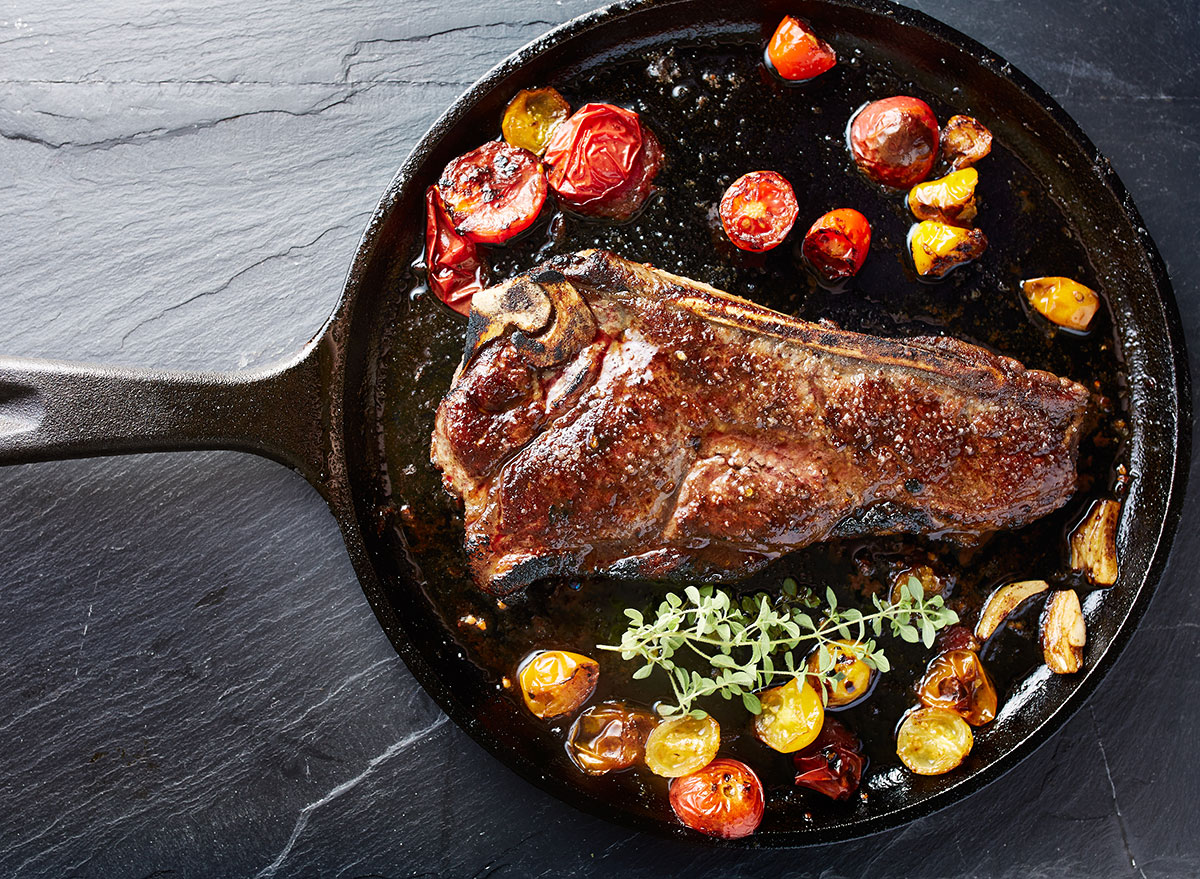
Grass-finished meat may be more nutritious than its counterparts, and it tastes better, too.
How to fix it: If it's accessible for you (both in terms of availability and budget), consider buying grass-finished meat the next time you're at the store. And make sure you know the difference between "grass-fed" and "grass-finished."
A "grass-fed" label only means that the animal was fed grass at some point in its life and could have eaten soy or corn in its final days, Boyd explains. "Many people nowadays have food allergies, and if you're eating meat to stay away from corn and soy and then the meat ate corn and soy before it was slaughtered, you can experience allergies," she says. So that's something to keep in mind while you're shopping for meat.
Mistake: Not checking where your meat is from.

If it's possible for you, consider buying local meat. It might be fresher, tastier, and full of more nutrients than its mass-produced counterparts. And you can feel better knowing animals are being treated well, too.
How to fix it: Support local farms and butchers if you can. "I know exactly what farm and where my meat comes from," Boyd says. "I know the farm, the location, and their farming practices. This is so important to make sure the quality and the ethical treatment of the animals is high."
With these tips in mind, you're on your way to some delicious meals ahead. And in case you aren't sure, Here's Exactly What Temperature Every Cut of Meat Should Be Cooked To.
